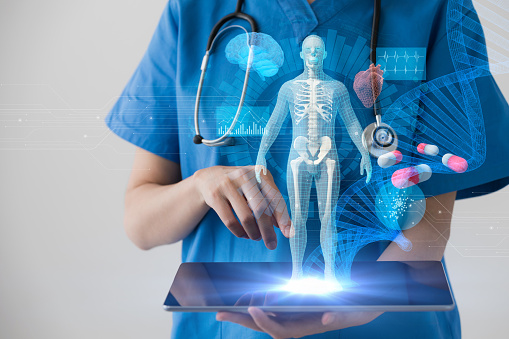Is Your Organization Prepared?
Today’s networked medical devices can be a lifesaver for many. Both wired and wireless technology allows healthcare workers to access the information they need to provide improved therapies and ensure patient compliance.

The Internet of Things (IoT) is one giant step forward in this regard. It can eliminate the use of antiquated methods that still rely on paper-based processes for of hospitals and clinics. This new technology makes diagnoses and treatment much easier and improves accuracy—errors can be prevented as well. It also provides a vehicle for the transfer of accurate medical records that can mean the difference between life and death.
The IoT Allows For The Transmission Of Accurate Data In Real Time
IoT medical devices allow health data to be transmitted in real time to trained health care attendants. Once the healthcare worker examines these records, he can call for emergency services if needed. This is a good way to learn whether a patient should be admitted to the emergency room. Patients no longer need to guess if their blood pressure or heartbeat reading requires immediate attention.
Networked thermometers send readings directly to IT systems that add the data to a patient record, and alert attendants if a reading is out of the expected range. Even drug dispensing can be automated to reduce the chance of overdoses or lack of patient compliance with a prescribed treatment plan. All of this provides peace of mind for both patients and caregivers.
The IoT Can Improve Business Processes For Healthcare Organizations
Detecting warning signs of a serious illness early on is of benefit not only to patients but to healthcare organizations. It’s a proven fact that early intervention can make it less expensive to treat an illness. But it can also save someone’s life. If their cancer is caught in time, there are some very effective means of treatment and some patients go into complete remission. All with the use of IoT technology.
Today, IoT in healthcare enables healthcare organizations to provide outpatient care in patients’ homes or in lower-cost clinics. This has the potential to free up hospital beds for patients with more intensive care needs. Patients enjoy being able to heal in the comfort of their own home. It’s often a much better environment than a hospital room.
In addition to patient care benefits, IoT networked medical devices provide opportunities that can improve business processes for health organizations. The more data they accumulate, the more information they have for operational planning.
These devices can be used to:
- Incorporate patient medical readings with electronic health records.
- Detect any issues that may impact medical equipment operability.
- Send software updates to devices over a network.
- Manage and track medical IT assets to see if they’re being used for optimal ROI.
Big Data Is On The Rise
However, with the increased use of the IoT devices, comes the requirement to manage and store massive amounts of data – big data. And, unless an organization stays on top of this, they could face challenges regarding network connectivity, data storage, data processing, and IT security.
Fiscal concerns are driving the demand for big-data applications. Payors are entering the field with their own requirements and agreements for healthcare organizations. Rising healthcare costs require deeper analysis and data integration for organizations to deliver care more cost effectively than ever before.
Where physicians traditionally used their best judgment when making treatment decisions, now they’re moving towards evidence-based medicine which involves systematically reviewing massive amounts of clinical data. Compiling individual sets of data into big-data algorithms provides a more robust set of values and, in most cases, better and more cost-effective treatment decisions.
4 Important Things To Know When Setting Up a Healthcare IT Infrastructure That Utilizes Big Data:
- Processing, storing, and managing big data is not the same as with traditional data. It requires special consideration when developing IT infrastructures to handle it. You need flexible and open interfaces because you must plan and prepare for new forms of data that may emerge. So, don’t assume you can use traditional data modeling solutions when using big data.
- Big data infrastructures must focus on the core operations and purpose of your healthcare organization. It’s essential to identify how big data will be used, and model that data in your planning.
- When considering big data methodologies, technology teams should be able to build data models that match your unique requirements. Big data requires an entire system rather than a database structure like that for traditional data. The components of big data should contain corporate governance for security and accessibility, requirements for business information, storage requirements, open interfaces, and integration for various types of data.
- Identify and deliver only quality data. Concentrate on applying sound definitions through metadata that describes the data, where it came from and what its purpose is. The more closely you can identify the data, the better it will support your purpose.
To date, the healthcare sector has lagged behind sectors like retail and banking in the utilization of big data. Some of the reasons for this are due to concerns over patient confidentiality. However, out of the need for more cost-effective results and improved management of care, the IoT and big data are catching on in the world of healthcare. The question remains, is your healthcare organization prepared for this revolutionary change?
